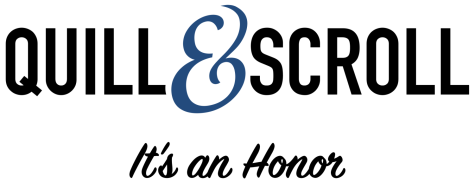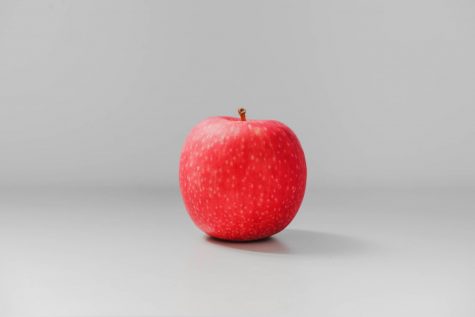THE WEEKLY SCROLL
May 6, 2021
News, tips and advice from Quill and Scroll
The Lede
Teacher Appreciation Week
In New Hampshire, as well as other states, there are fewer teachers to appreciate
File this under “We could have told you that.”
Teacher Appreciation Week continues through Saturday, and in New Hampshire, Baby Boomer retirements, low pay, frustrations with challenges raised by the pandemic and other factors have all contributed to a dearth of educators in the Granite State.
There are many reasons why teachers leave — and stay in — the profession. A large part of the problem continues to be how young people view teaching. The relatively low pay, long hours and lack of support work to discourage college students from pursuing teaching as a profession.
Here’s what you can do
Can you do a survey of your faculty regarding when they plan to either retire or leave the profession? How many of your students are considering a career in education? What do any or all of them think about the positives and negatives of the profession? If you conduct a survey, be sure that you only identify respondents and their plans if they want their specific responses to be directly attributed to them. If you’ve never done a survey before, here’s a good resource.
Also, it’s never too late to do some “Teacher Appreciation” work in your publication. Check out these by the student-journalists of The Little Hawk at Iowa City (Iowa) High School.

Photo by Daniel Schludi on Unsplash
Teens and vaccines
Soon, every child 12-18 years old will be eligible for COVID vaccine; what will that mean for school in the fall?
By early next week, U.S. government officials are set to approve COVID vaccinations for 12- to 15-year olds. Already those aged 16 and older are eligible most everywhere for a vaccination. For those states that have already said there will be no hybrid learning option next year, but for others it may make the decision a little easier to make.
Also, we’re finding out that some vaccine hesitancy is caused by a fear of needles — “needlephobia.” Here are some tips on how to overcome that problem.
President Biden has said that his goal is to get 70 percent of Americans vaccinated by July 4, which would allow for many businesses, sporting events and travel companies to operate on more normal terms.
Here’s what you can do
What is your state’s policy on in-person learning for the fall? If they haven’t already made that decision, what sort of data will state decision-makers need in order to make that call? Would it be the number of students in the school who have been vaccinated? Will your state/district/school require students to be vaccinated? How do students feel about getting the vaccine? How many already have it? What are the vaccination rates in your country, state or county? And of course, how do parents feel about sending their kids to school, with or without the vaccine?
Teen sues soccer league
15-year-old phenom sues NWSL for a chance to play as a professional
Olivia Moultrie, a 15-year-old soccer prodigy, has sued the National Women’s Soccer League for the right to play as a professional. In other words, she wants to get paid for her skills in the same way that professional golfers and tennis players her age would.
Moultrie, her parents and her attorneys argue that the league’s requirement that players be at least 18 years old is a violation of the Sherman Antitrust Act, which was enacted in the early 20th century to prevent unfair business monopolies. Many players in European leagues and in the U.S.’s Major League Soccer men’s league have played as professionals before turning 18.
What you can do about it
This brings up a lot of related issues, including the fight for college student-athletes to be paid for their contributions and for the use of their name, likeness and image in marketing. Is the whole “school-to-college-to-pro” progression legitimate? Should leagues be able to establish a minimum age? Should the NCAA continue prohibit student-athletes who have competed as professional athletes from participating in their sports? What do the athletes and coaches at your school think about Moultrie’s suit?
It’s An Honor
Guatemala is on board!
Quill and Scroll expands to Christian Academy in Guatemala with first induction ceremony
Last week, adviser Jackie Davis of the Christian Academy of Guatemala conducted the first induction ceremony for her students, who come from all over the world to serve as missionaries in that country.
That extends Quill and Scroll into another country, and we now have chapters in more than 30 countries around the world. Earlier this year, we welcomed our first corporate chapter, Eye on Ivy, represented by students in Pakistan.
Quill and Scroll Executive Director Jeff Browne spoke at the Christian Academy induction via Zoom.
Scholarships!
Apply now for Quill and Scroll scholarships before applications close
The Quill and Scroll scholarship applications for both students and advisers are open now on our website! Interested in applying? Read below for information on both student and adviser scholarships.
Student Scholarships
All Quill and Scroll members as well as national winners in our Yearbook Excellence Contest and International Writing, Photo and Multimedia Contest are eligible to apply for our student scholarships.
The student scholarship application deadline is May 15, 2021. Winners will be notified by June 1, 2021.
Adviser Scholarship — last call!
The Lester G. Benz Scholarship of $500 is available to teachers who:
- teach at a Quill and Scroll school,
- have at least one year teaching high school journalism and/or advising publications,
- plan to return to the high school classroom and media advising next year AND
- will apply the information gained in the course work, seminar or workshop taken as a result of this scholarship.
Applications are due by May 7, 2021. Last year’s winner was Laura Bowe of the King School in Connecticut.
Visit here for more information on adviser scholarships.
Induction season!
It’s time to honor seniors and induct members
It’s that time of the year when Quill and Scroll chapters should be nudging their advisers to think about honoring seniors and inducting new members — be they sophomores, juniors or seniors — into our international journalism honor society.
We’re able to take and fulfill orders, even as Quill and Scroll staff work from both our home offices and our offices at the Adler Journalism Building on the University of Iowa campus.
We published this update in late 2020. It is still valid and includes a simplified order form (See Video Below) for schools and advisers willing to pay via credit card, and an offer to host an online induction ceremony for your students. The sooner you induct new members, the sooner they’ll be able start planning chapter activities in the spirit of Quill and Scroll. Here’s a link to a PDF file of the Q&S Chapter Handbook if you don’t already have it.
The NME is not your enemy!
Jack Kennedy speaks with Sylvia Clubb on THE SOURCE podcast
You have until June 15 to enter your news magazine, newspaper, online news site or multimedia/multi-platform into the prestigious News Media evaluation critique service sponsored by Quill and Scroll. We have a team of professional journalists, journalism professors and skilled former journalism advisers (Hall of Famers, all) ready to provide valuable feedback that your staffs can build on for next year. We GUARANTEE that you will receive your rating and feedback before Sept. 1, 2021.
Here’s a video tutorial that explains the levels of service and how to enter.
What’s Viral?
Podcast Contest
NY Times contest for teens has a May 18 deadline
You have 12 days now to enter The New York Times’ Student Podcast Contest for 2021. The contest asks middle and high school students to submit an episode of five minutes or shorter. The genre and topic are all up to you. Winners will get wider distribution via The Learning Network. Click on the image below for all the rules and procedures to enter.
What you can do about it
Uh, enter? Seriously, if your news media aren’t producing relevant and timely podcasts, it’s time you think about it. The type of podcast and the level of production quality can vary, but it’s good to be consistent from week to week. Podcast types can range from elaborately reported and scripted storytelling that lasts from one episode to another, to simple interviews of newsmakers or journalists who cover newsmakers. The link above also has an FAQ section with tons of links out to learning resources for podcasts, but here’s a link to Michael Hernandez’s outstanding e-book about podcasting in a high school setting.
Trump’s new site
Former president still verboten on Twitter and Facebook
Donald J. Trump is still spouting lies about having won the presidential election last year, so Facebook refused to allow him access to their site, though Mark Zuckerberg and the Facebook board still may reinstate him. Twitter also continues to ban the 45th president because of his persistent problems with the truth, though for a short time Wednesday afternoon, the president re-established a Twitter presence, though the site quickly shut him down again because of the election lies.
But now Trump has devised a workaround that may allow his followers and fans to repost information from the president. It’s called “From the Desk of Donald J. Trump,” and it’s a website on which Trump puts out brief snack-sized pronouncements that mimic the feel of his voluminous number of tweets before he was banned.
Here’s what you can do
The foundation of Quill and Scroll, as it was established in 1926 by George Gallup and 19 high school journalism advisers, is Truth. If you’ve been inducted into the Society, you know how the initiation ceremony relies on candles to provide a real symbol of how journalists shine the light of truth on falsehoods. Should you get back into covering politics — and the former president shows every desire to get back into the game — please continue to verify his pronouncements in the same way you’d want to verify pronouncements by President Biden, Vice President Harris, your state officials, your school officials, and the sources you use for your story. Be loyal to the truth, not to politicians, no matter who they are.
Cute dog
Isn’t that what the internet is for?
Michael Higgins, the president of Ireland, tried speaking to the media and his countrymen this week, but his pet Bernese mountain dog stole the show. Watch the puppy do his thing:
https://twitter.com/nowthisnews/status/1389739871913267200
Here’s what you can do
One of the great lessons in reporting and descriptive writing goes like this: “Get the name of the dog.” That means if you want to present a full picture of a scene to readers, get every detail you can find. In this case, the dog’s name is “Misneach,” which is an Irish name that translates to “courage.”
Just A Thought
If my students leave my classroom as ethical and empathetic journalists who see the value in really listening to and understanding other people, well, that’s even better.
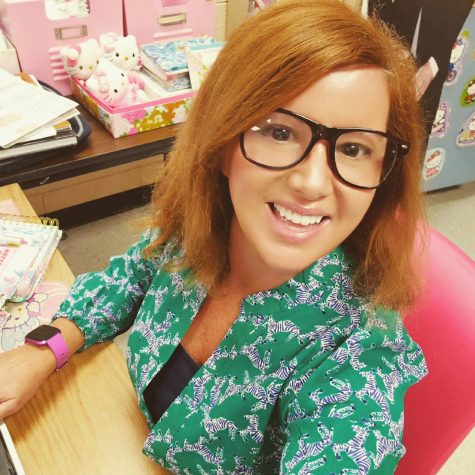
Photo Courtesy Lisa Beth Miller
Pivot!
Rethinking Publications Classes in a Pandemic
BONUS: A seven-day unit on journalistic interviewing
by Lisa Beth Miller
March of 2020 was obviously a strange time for everyone. But for teachers of high school production-based publications classes, it was a time to rethink, rebrand, and refresh the way things are done.
As a 23-year veteran teacher, I had admittedly fallen into a routine. I sponsor our school’s yearbook, newspaper (now a news website), and literary magazine, and quite honestly, my routine worked pretty well. My students met their deadlines, our publications regularly won awards, my classes were popular electives. The motivation to change things just wasn’t really there.
Then the announcement came. Schools in my state would be closed until further notice starting March 16, 2020. Surely we would be back in a few days, right?
My initial response to the shutdown was relief that we had finished our yearbook and literary magazine on March 12. In a completely random stroke of luck, my journalism students voted in January 2020 to stop printing a hard copy newspaper in order to transition to a news website. These facts allowed me to remain calm as we finished the school year virtually.
In other news, I didn’t realize how challenging it would be to engage students virtually. I really didn’t know what I didn’t know.
On the surface, we got through the end of the school year. My journalists continued to publish some articles and came to class when they felt like chatting. My yearbook students were even less enthusiastic as they worked on planning a curbside yearbook distribution and brainstormed ideas for our next edition. The year ended quietly, with a melancholy tone. We distributed the yearbooks curbside with no fanfare.
My summer was spent figuring out how to do this better, just in case we had to teach virtually again in the fall.
Update: we had to teach virtually again in the fall.
Journalism
What I did when we were all virtual
I started by introducing students to the basics of journalism and how journalistic writing differs from other types of writing (essays, papers, creative writing) they may have practiced. With an emphasis on creating source-based news and feature articles, I created a unit on finding and effectively interviewing sources.
We paid particular attention to HOW to conduct interviews, since the pandemic (at that time) was making face-to-face interviews unsafe. Students practiced constructing emails, texts, and DMs that would engage sources. They learned how to use Zoom for virtual interviews they could record.
They practiced writing questions and follow-ups that would encourage sources to really talk to them and express themselves. Within this unit, we watched some famous journalists in action, interviewing. Anderson Cooper chatting with Eminem and Oprah Winfrey interviewing Mike Tyson were two favorites.
I spent quite a bit of time on interviewing and data gathering, knowing my editors and I would be coaching students individually on how to put it all together and find their stories.
I assigned an editorial team of two students in each class. These were my more advanced students. They were in charge of all planning meetings with the news staff members in their class.
I muted myself during these meetings so they could really get to know their reporters and discuss article topics.
Once student journalists finished their article research (interviewing/fact gathering), they were required to schedule meetings with editors and with me to discuss their findings and the direction the story was taking. This kept everyone in the loop as we worked through writing articles and allowed me to coach writers through the process of creating a news story, feature story, or editorial.
While we were virtual, students had two synchronous days and three asynchronous days each week, so they were given a full “writing week” to complete articles and save them in WordPress. Editors would then have two days to edit and publish articles on our news website.
They were also required to share and promote each article on social media in order to drive readership.
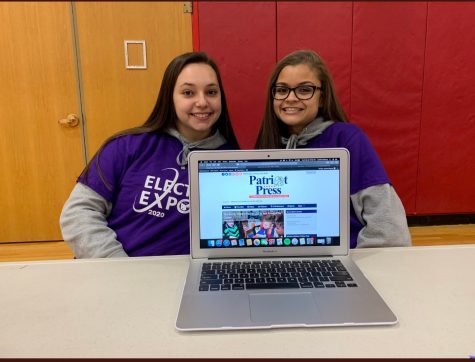
News site editors Zoe Lowe and Jasmine Beverly, both 2020 graduates, embraced online learning and publication. Photo courtesy Lisa Beth Miller.
What I tweaked when we were hybrid
Just as my students fully had the hang of virtual journalism, our county announced it was switching to a hybrid plan. So in November, some students now came to school in person on Monday and Tuesday, while others came in on Thursday and Friday. The students opting to stay virtual were also assigned two days a week to attend Zoom sessions. In essence, each “class” actually became four separate groups of student journalists. I was tasked with teaching the in-person and virtual students, all at the same time. Yay!
For the sake of unity (and my sanity), I did not change much about how our journalism class worked. I had the in-person students join the virtual sessions to interact with editors and fellow journalists. I still coached writers individually, both in person and virtually, but I wanted them to maintain regular communication with the editors.
We continued publishing articles on our twice-monthly schedule.
Our hybrid plan later (in April) changed to a four-day-a-week plan, allowing me to work with students on a more regular-ish schedule.
Lessons learned
The extra emphasis on interviewing was definitely worth the effort. Students became very skilled at asking follow-up questions to really find out how people are feeling. This was especially evident in the articles about the pandemic and how it was impacting the normal lives that they previously took for granted.
Another lesson learned is that my students really are good communicators.
Kids text, DM, Facetime and talk regularly. I just needed to meet them where they were. Conducting interviews using methods other than formal emails or in-person question and answer sessions was actually both practical and effective.
See additional lesson ideas for improving interviewing skills below.

Photo Courtesy Lisa Beth Miller
Photojournalism/Yearbook
What I did when we were all virtual
Yearbook was a bit of a different scenario. Although we created the yearbook on a fairly easy-to-use online platform, the majority of my 50 yearbook students were new and untrained. I made the decision (with the help of eight editors) to task just the trained editors with actual page design and creation. Beginning students would focus on interviewing, writing copy and gathering photographs.
To stay organized, we set up a discussion board each week, and required ALL students to contribute 100-word quotes, photographs, and captions by Friday afternoon each week. We focused on just ONE topic (yearbook spread) at a time. The topic of the week was revealed each Monday, then students had all week to submit six items. Amazingly, this worked. Students networked with others in the school community to complete interviews and obtain pictures. Each week ended with a clearly labeled discussion board overflowing with hundreds of items.
Editors then went through each board, gathering what was needed to complete their pages. Using this system, we completed a spread or two each week. We completed the entire student life and people sections while completely virtual.
The editors loved this new process.
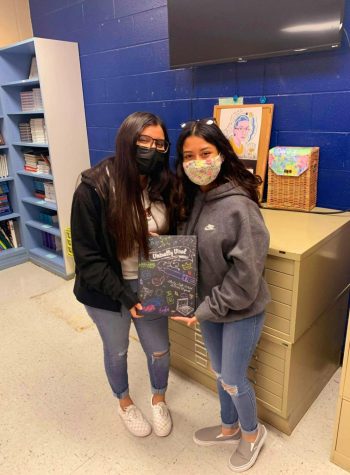
Yearbook editors Melanie Ventura (sophomore) and Dianaly Poot Salazar (junior) show off the book. Photo courtesy Lisa Beth Miller.
What I tweaked when we were hybrid
Once students switched to a hybrid schedule in November, I had around 20% of my yearbook staff in person, while the other 80% remained virtual. At this point, we needed to create the sports, clubs, and academics sections of the yearbook.
We focused on one section at a time, still using the discussion board system for data gathering. The academics section morphed from the typical one spread about each department to five spreads covering the real concerns and situations of this school year. Topics included virtual learning, hybrid learning, resilience of teachers, catching up (with classes and social lives), and life lessons learned.
Each spread featured “student speculation” and “educator viewpoints” so that everyone could honestly express their feelings about the very chaotic year.
Next we moved to sports and clubs. Though we did not have the usual quantity of pictures to include, we managed to focus upon student experiences and emotions. Athletes and club leaders spoke candidly about what they accomplished this year and what frustrations they dealt with along the way. Crowded group pictures were not allowed, so we utilized team shots created in Photoshop using individual athlete portraits.
We completely finished the book in March and distributed in May.
Lessons learned
The early emphasis on interviewing and communication was critical to our success. Virtual students needed to assess honestly whom they could easily interview and who might be more challenging to contact. I did provide school email addresses for all members of the school community to my staff members, and we did some practice writing polite and professional emails.
We also did a lot of practice formulating follow-up questions during interviews to be sure that the data provided was detailed and unique.
This got my student journalists out of the habit of asking the exact same questions in the exact same way to all of their sources. They realized that this practice often results in bland and repetitive answers that probably will not be included in the yearbook. I will definitely be keeping this emphasis on effective interviewing in my curriculum. We obviously always covered this aspect of the journalistic process, but I now see that extra care needs to be taken with this unit to really see results!
See lesson ideas for this unit below.
Finally, due to popular demand, we will most likely be keeping the discussion board system of getting everyone to contribute to every topic. Though this probably seems excessive, the editors LOVED having so much data to look through as they created each spread. They were empowered to select the best quotes and photographs, but they were also able to pay attention to ensuring diversity on each and every spread.
This year has been a turning point in my career as a journalism educator.
Though the pandemic shutdown was not an ideal situation, it gave me time to honestly assess what I am doing. I was able to truly consider what skills would be most helpful to my student journalists, both in my class and in life. If students leave my classes as better communicators and stronger writers I have done an okay job. If they also leave as ethical and empathetic journalists who see the value in really listening to and understanding other people, well, that’s even better.
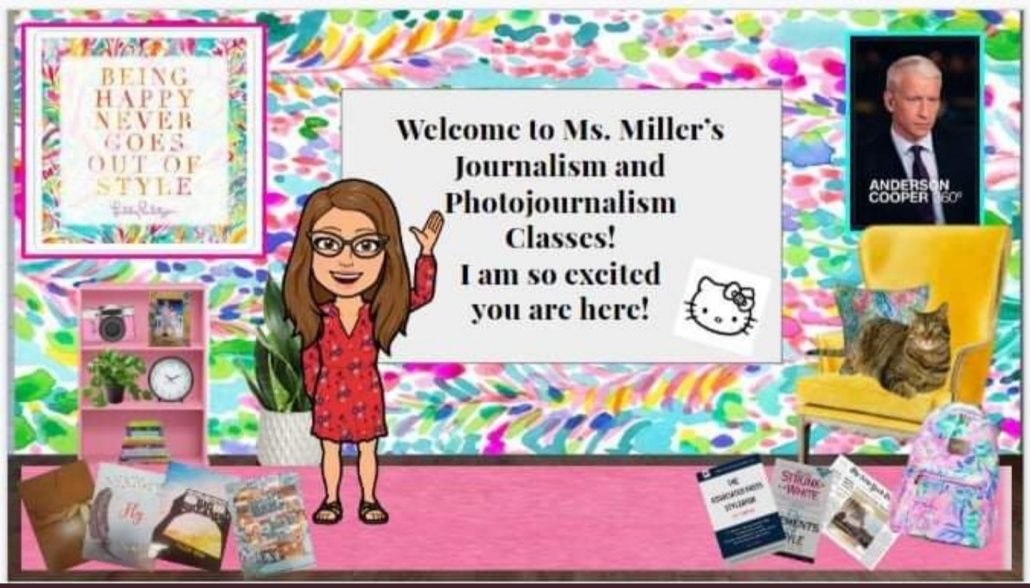 Lesson Plans
Lesson Plans
Teaching Journalistic Interviewing
Day 1: What is “source-based writing”?
Objective: Students who are new to journalism require an introduction to source-based writing. Many are accustomed to writing essays based only on their own opinions. The goal of this lesson is to demonstrate how and why journalistic writing is different and relies upon well-selected sources.
Activity: Students will be given 5 current newspaper and magazine articles (select high interest topics) to examine. During the class period, they will work with a partner to determine what sources were used for each article. They will discuss why each source was valuable to the journalist’s research process. Could any additional sources have been used? Why? Could any sources have been eliminated? Why or why not? Did the choice of sources provide balance and a variety of viewpoints within the article?
Evaluation: Students will be assessed based on participation in a class discussion. Were they able to identify sources? Were they able to recognize what each source had to offer? Were they able to recognize whether the story was told fairly and accurately based on information from the sources?
Day 2: Deconstructing an interview-based article
Objective: Now that students have a basic understanding of utilizing sources to tell a story, they will need to examine the art of conducting a journalistic interview. This activity is designed to help them understand how to construct and ask meaningful interview questions.
Activity: Working with a partner, students will once again examine the 5 articles from lesson 1. This time, students will focus upon the information provided by each source in direct or indirect quotes. Once students ascertain all included information from each source, they will attempt to create the interview questions and follow up questions that were asked to glean this information from each source. They will be asked to recreate the actual dialogue between the journalist and the source. Creativity will be encouraged as they craft these conversations.
Evaluation: Each pair of students will select one interview conversation to share through reenactment. Students will be evaluated on accuracy; would the interview question actually glean the information or quote included in the article? The evaluation process will, of course, allow for creativity and originality.
Day 3: Selecting the right sources
Objective: Now that students understand the value of good sources, they need practice in selecting sources for the articles they will actually be writing.
Activity: A selection of real article topics will be written on index cards and placed in a basket. Each student will draw three topics, then create a list of 10 possible sources for each article. The student must justify the inclusion of each source and explain what data and viewpoint they could offer.
Evaluation: Students will be evaluated on their ability to come up with a variety of relevant sources that would allow them to write a detailed and balanced source-based article.
Day 4: Crafting impactful interview questions
Objective: Building upon their knowledge of how to select sources, students will return to yesterday’s assignment and actually decide what questions they would ask each selected source. Part of this lesson involves emphasizing that asking all sources the exact same questions is NOT a good interviewing technique. Strong interviewers need to customize unique questions for each source.
Activity: Students will select ONE of the three topics that they worked with yesterday. After examining the list of sources (and justifications) that they came up with, they will create a set of 5-7 interview questions for each source. No exact sets of questions should be repeated with multiple sources; the questions should be unique and based on who the source is (consider grade level, job, sports position, etc.). Questions should be open-ended, and should emphasize the hows and whys.
Evaluation: Students will be evaluated on their ability to create relevant, open-ended questions for their sources. Attention will be given to ability to create unique questions for each source.
Day 5: Understanding how and when to ask follow-up questions
Objective: When interviewing, students need to recognize when a brief and minimalistic answer is provided so that they may ask follow-up questions. Listening is the most important skill here; if the student reporter just sticks to a script, they may miss important insight and needed details.
Activity: Watch a current and high interest level interview. The Oprah Winfrey interview with Prince Harry and Meghan Markle is the one I used this term (at my students’ request). Have students watch carefully and note when follow up questions are asked. Why were these follow up questions needed? How did the information provided in these answers add to the value of the interview? Were there any follow-up questions asked that were particularly critical to the success of the interview? Explain.
Evaluation: Students could be evaluated on their written responses, but I prefer to utilize a Socratic seminar style discussion. Students may refer to their notes to respond to discussion questions about the interviewing techniques they just saw. Points are awarded based on whether students directly quote and refer to the interview in detail (five points per answer) or whether they are simply giving an opinion or agreeing with a classmate without a precise reference or explanation (two points per answer). For a quick discussion/seminar, students may be given a goal of earning 15-20 points. Be sure to explain the evaluation activity to students so that they know to take high quality notes during the interview!
Day 6: Accurately telling your story using quotes
Objective: Time to put our interviewing techniques into action! By this point, students should be assigned to write an actual story. They should complete the process of selecting sources, writing interview questions, and completing interviews. For this lesson, they will examine their actual interview notes from all sources and find their actual story based upon this data. The emphasis here is to help students understand that until they have all of their interview notes, they cannot be sure of exactly what their story will be. For example, if the topic assigned is football, the interviews with athletes could go in many different directions. The reporter could find out that the team is very tightknit and focused, or she could find out that the changes in coaching styles are impacting the team, or that injuries are plaguing the team this year. The reporter’s basic topic is football, but she will not know exactly what to focus upon until her research is complete.
Activity: After reading through all interview notes, reporters will note and highlight the strongest quotes from each source. They will be encouraged to be picky. Every word of every interview should NOT be included in an article. Reporters should also avoid redundant quotes that are phrased similarly. Once the reporter has selected what quotes will best tell the story, have inexperienced reporters write each quote on an index card. They are not required to use every source, but should try to include at least 6 distinctly different sources in the final article (for example, maybe players in different grade levels and positions, plus a coach or two). Reporters should then examine the quote cards and figure out how they will piece together their story. It is only at this point that they may begin writing the lead and the article itself.
Evaluation: For this activity, I evaluate reporters based on a detailed conversation with them. We talk through the selected quotes and where/how they will be included in the story. We review the basic topic (for example, football) and the actual story they found (for example, sickness and injuries heavily impacting the season so far). The purpose here is to push reporters to really research the topic and talk to the sources to find a story. Just reporting on scores or easily found facts is not good journalism.
Day 7: Attribution — The Rules
Objective: As students work through their first articles, I like to include a mini grammar lesson regarding proper attribution. It is important that students learn AP style, and master how to frame quotes within an article.
Activity: For this quick activity, I use the grammar and punctuation section of the AP Style Manual. The section on quotation marks has good, clear information and examples on how to punctuate direct quotes. Students are asked to practice correct punctuation and attribution with the quotes (on index cards) from the last activity. We pay particular attention on verbiage and structure to ensure that everyone understands and complies with AP style in the final drafts of their articles.
Evaluation: This activity is truly just for practice and to introduce students to the importance of the AP Style Manual. When their actual articles are submitted for grading and publication, they will be graded on using correct AP style in their overall writing and in quote attribution.
Standards (based on Common Core State Standards)
Arts and Communication
- Understands the principles, processes, and products associated with arts and communication media.
- Knows and applies appropriate criteria to arts and communication products.
- Uses critical and creative thinking in various arts and communication settings.
- Understands ways in which the human experience is transmitted and reflected in the arts and communication.
Language Arts
- Uses the general skills and strategies of the writing process.
- Uses the stylistic and rhetorical aspects of writing.
- Uses grammatical and mechanical conventions in written compositions.
- Uses the general skills and strategies of the reading process.
- Uses reading skills and strategies to understand and interpret a variety of informational texts.
- Uses listening and speaking strategies for different purposes.
- Understands the characteristics and components of the media.
Life Skills: Life Work
- Makes effective use of basic life skills.
Life Skills: Working With Others
- Displays effective interpersonal communication skills.
Lisa Beth Miller is the adviser at Liberty High School in Bealeton, Virginia. This article was completed as part of her application to be certified as a Master Journalism Educator through the Journalism Education Association.
